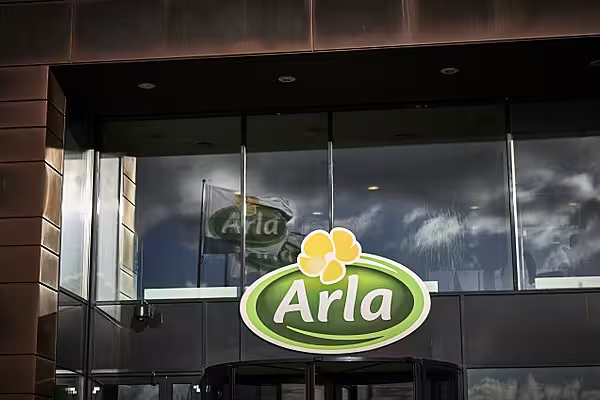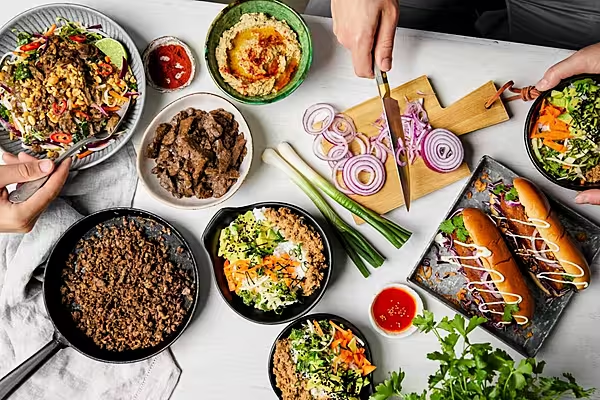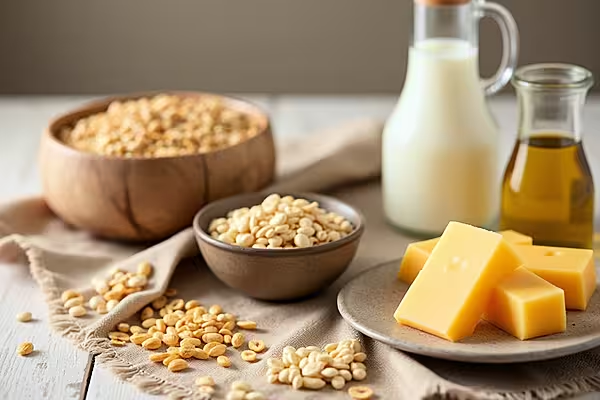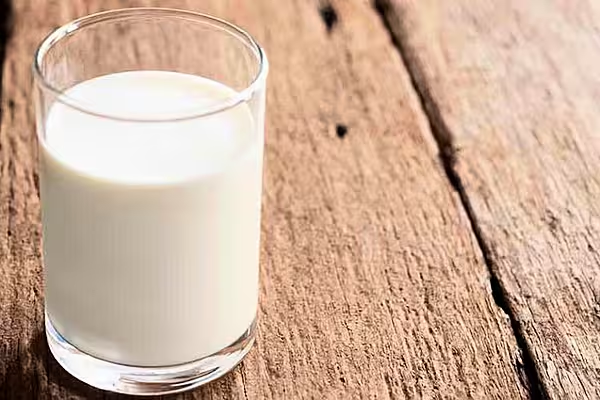Sustainability and profitability should go hand in hand, as Peter Giørtz-Carlsen, chief commercial officer at dairy giant Arla, explains. This article first appeared in ESM's September/October 2024 edition.
The dairy industry has long been identified as a key contributor to global emissions – according to the WWF, the sector has a ‘considerable effect on climate change due to emissions of greenhouse gases such as methane, nitrous oxide, and carbon dioxide.’
As such, in recent years, attention has turned to what the biggest operators in this industry are doing to correct that.
With revenue of €13.7 billion last year, Arla is a key player in the global dairy landscape. The European cooperative, which is owned by more than 8,000 farmers, is home to well-known brands such as Arla, Lurpak, Puck and Castello, and its products are sold around the world.
Sustainability Focus
In recent years, Arla has embarked on a journey – its Climate Ambition Roadmap – to ensure that its business growth is underpinned by sustainability efforts, guided by a series of stringent targets, including reducing Scope 1 and 2 emissions by 63% and farm Scope 3 emissions by 30% by 2030.
“We have a clear road map in place, which we are also incentivising our farmer-owners to follow,” Peter Giørtz-Carlsen, Arla’s chief commercial officer, tells ESM. “Some of the improvements we’ve made include what we call the Big Five – initiatives related to fertiliser use, protein efficiency, feed efficiency, sustainable feed, and so on.”
Since 2015, Arla has reduced emissions by 12% to 1.14kg of CO2e per kilo of milk. For it to achieve a 30% reduction, this would require emissions to drop to 0.9kg of CO2e per kilo of milk – something that is only achievable with dedicated buy-in from farmers.
“We have very strong support from our farmer-owners, who want to be part of the solution for creating a more sustainable food system, including dairy,” says Giørtz-Carlsen. “We are fortunate to have an ownership that wants to go in that direction.
“Secondly, we’ve found a model that recognises that not every farm is the same. There are different levers that are more effective for some farmers than others, but it’s a repertoire of levers based on science that we allow our farmers to invest in, to achieve reductions, so it’s very inclusive.”
FarmAhead
Earlier this year, Arla launched a new brand platform, FarmAhead, encompassing its collective activities on climate reduction and the protection of biodiversity. This includes several pillars.
The FarmAhead Customer Partnership links the company’s data-driven climate reduction efforts with customer demands for dairy products with a lower carbon footprint. The programme covers more than one billion kg of milk with UK customers, and in Denmark, it now includes all categories and brands, similarly totalling over one billion kg of milk. This represents all dairy products sold by Arla in Denmark.
Allied to this, FarmAhead Check is a comprehensive, verified dataset that outlines the climate footprint per kilogram of milk produced. It provides insights into where emissions originate and how they can be most effectively reduced.
The FarmAhead Incentive, meanwhile, offers farmers ‘points’ based on their activities to reduce climate impact, manifested in an additional premium (€0.03) per kilo added to the price that the farmer receives.
Finally, FarmAhead Innovation is a platform to explore new technological and data-driven opportunities that can be potentially integrated into the other FarmAhead elements in due course.
Announcing its half-year results in August, Arla noted that the FarmAhead Incentive programme has seen widespread adoption, with the average points accrued rising from 49 to 53, and supplementary payments increasing as a result.
“Of course, we have 8,000 farmers, and some are more progressed than others,” says Giørtz-Carlsen. “We are still in a position where we need to help all our farmers move to a better level.
“The beauty of our incentive model and the data behind it is that it clearly shows farmers where they perform very well. For example, there are low-hanging fruits where they have made significant improvements and areas where they haven’t, but with 13.7 billion kilos of milk to manage, all farmers need to make progress.”
Customer Expectations
Giørtz-Carlsen adds that Arla’s sustainability efforts are being driven by an understanding that it’s “the right thing to do,” however, he’s unsure as to whether it is currently influencing shopper behaviour to a significant degree.
“It’s probably still early days to see if the majority of consumers are making their final choices based on these factors when picking products off the shelf in the supermarket,” he says. “I believe that day will come, and leading brands need to be at the forefront of this agenda and in the minds of consumers.”
However, the same can’t be said of Arla’s customers – Europe’s retailers – who expect the group to elevate its sustainability efforts.
“Most of our customers have signed up for science-based targets,” says Giørtz-Carlsen. “They are examining their abatement curves and looking at how they can improve their Scope 3 emissions. Arla is part of their Scope 3 emissions portfolio, and for some customers, we represent a significant portion of that.”
The development of the FarmAhead Customer Partnership helps quantify that process, providing data that retailers can use in their own ESG messaging.
“That’s the sweet spot,” as Giørtz-Carlsen puts it. “Given that we have data on the farm and know precisely where the milk is coming from, which farm it originates from, which dairy it goes through, and which customer it ultimately reaches, we can provide them with the data they need for their ESG reports.”
That Arla has been able to further its sustainability efforts amidst ‘volatile market conditions driven by geopolitical tension and uncertainty’ and ‘inflationary pressure’ (as it noted in its half-year report) is impressive, and the company ‘fully expects’ to achieve its emissions reduction targets by the allotted deadline.
Giørtz-Carlsen believes that the company is “well on [its] way” to developing a more sustainable dairy footprint while continuing to drive global business growth.
“On a macro level, we also see dairy playing a very important role in feeding the world – there is a need for protein to feed a growing population,” he says. “The challenge is how to balance these two aspects: we need to grow and meet the global demand while managing our environmental footprint. I think it can be done, but it’s the main challenge we face on an overall level.”














